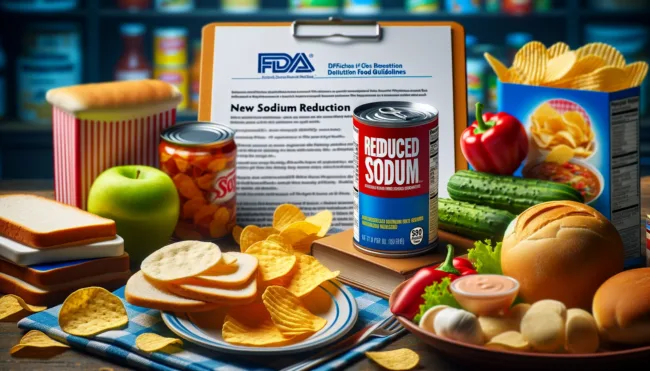FDA sets bold new sodium reduction targets—what this means for your food and health!
In a pivotal move to enhance public health, the U.S. Food and Drug Administration (FDA) has released draft guidance for Phase II of its voluntary sodium reduction initiative. This new guidance builds on the success of Phase I and sets ambitious targets to lower sodium levels in processed and packaged foods. If adopted, the new targets aim to reduce average sodium intake to approximately 2,750 milligrams per day, marking a substantial 20% reduction from pre-2021 consumption levels.
FDA’s Sodium Reduction Targets: A Critical Advancement
The FDA’s Phase II guidance represents a major step in its strategy to combat excessive sodium consumption, a leading contributor to high blood pressure and cardiovascular diseases. The Dietary Guidelines for Americans recommend a sodium intake limit of 2,300 milligrams per day for individuals aged 14 and older. However, before 2021, the average American consumed about 3,400 milligrams daily. The proposed Phase II targets are designed to bring sodium intake closer to these recommendations, improving public health outcomes and supporting disease prevention.
Phase I of the FDA’s sodium reduction initiative, introduced in October 2021, focused on encouraging reductions in sodium levels across a wide range of processed, packaged, and prepared foods. The preliminary data from 2022 indicates that approximately 40% of the initial Phase I targets have already been met or are near completion, demonstrating the initiative’s early success and effectiveness.
Expert Opinions on the Impact of Sodium Reduction
Jim Jones, FDA Deputy Commissioner for Human Foods, highlighted the significance of these efforts, stating, “Reducing sodium in the food supply has the potential to be one of the most important public health initiatives in a generation.” Jones noted that the FDA’s comprehensive nutrition strategy also includes updating the definition of “healthy,” introducing a proposed rule for front-of-package nutrition labeling, and exploring strategies to reduce added sugars. These initiatives are integral to the FDA’s broader goal of advancing health equity and reducing diet-related chronic diseases.
The FDA’s sodium reduction strategy is part of the White House National Strategy on Hunger, Nutrition, and Health, aimed at addressing diet-related diseases by 2030. The Phase II targets are aligned with the Healthy People 2030 objectives and complement the U.S. Department of Agriculture’s sodium limits for school meals, ensuring that children have access to healthier food choices both in and out of school settings.
The Broader Health Impact and Equity Considerations
High sodium intake is a significant risk factor for high blood pressure, which is closely linked to heart disease and stroke. The FDA’s initiative not only aims to improve overall public health but also to address health disparities, as underserved communities, including racial and ethnic minority groups, experience elevated rates of high blood pressure. By reducing sodium levels in the food supply, the FDA seeks to advance health equity and prevent thousands of premature deaths and illnesses related to cardiovascular diseases.
Ongoing Monitoring and Future Actions
The FDA’s sodium reduction strategy follows a stepwise, data-driven approach. The agency will continue to monitor industry progress against Phase I targets and evaluate the implementation of the new Phase II guidelines. Regular evaluations of sodium levels in foods will be conducted approximately every three years to support the FDA’s transparent and science-driven process. Future phases of sodium reduction targets will be developed based on ongoing monitoring and evaluation of sodium intake trends.
Additional actions by the FDA to support sodium reduction include a proposed rule to amend food standards to permit the use of salt substitutes and updated guidance on labeling potassium salts as alternatives to sodium chloride. These measures are designed to facilitate the adoption of lower-sodium ingredients and enhance consumer awareness.
Discover more from Business-News-Today.com
Subscribe to get the latest posts sent to your email.
